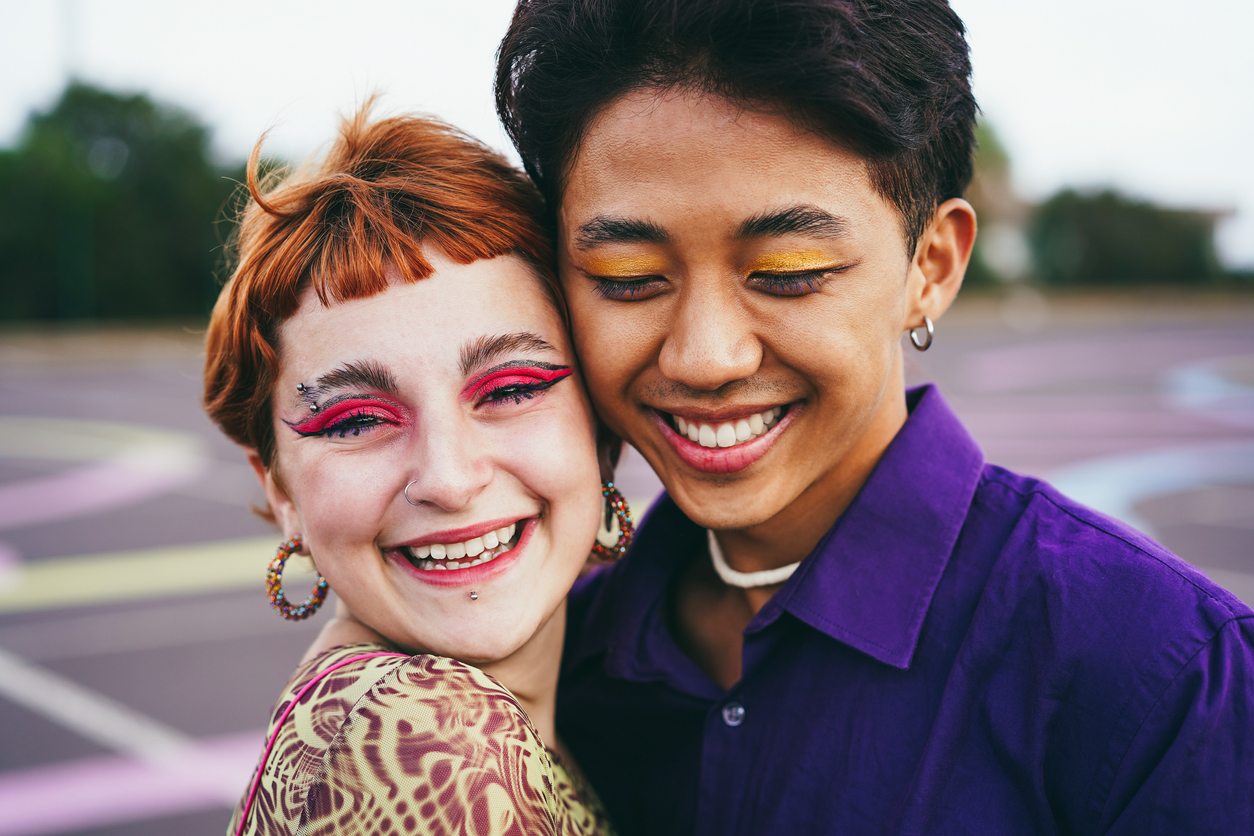The letters LGBTQ+ stand for lesbian, gay, bisexual, transgender and queer. The + is an inclusive way of representing all other sexual orientations and gender identities. We estimate that 6-10% of the population in Ireland identifies as LGBTQ+. This means that LGBTQ+ people are in your classroom, sports team, neighbourhood and community. There isn’t one thing that makes someone straight or LGBTQ+. But remember, all orientations and identities are valid. Everyone deserves to be who they truly are.
Sexual Orientation
- Sexual orientation is a term used to describe someone’s emotional, romantic and sexual attraction to other people.
- The word ‘gay’ is often used to describe someone who is attracted to the same gender.
Gender Identity
- Gender refers to roles, behaviours, expressions and identities of girls, women, boys and men that are created by society.
- Gender identity is our deeply felt internal experience of our own gender. Gender identity refers to how we feel inside.
- For many adults growing up in Ireland, gender was binary (made up of two things) and people were traditionally male or female; that is to say, ‘cisgender man’ or ‘cisgender woman’.
- Cisgender is a term for people whose gender identity matches their sex assigned at birth. Cisgender is the opposite term to transgender.
- Transgender is a term describing when a person’s gender identity that does not match their assigned sex at birth.
- Gender identity is not confined to a binary (girl/woman, boy/man), nor is it fixed. It exists along a continuum and can change over time.
If you would like to know more about LGBTQ+ identities, a good place to start is to learn some of the key concepts and understand what the letters in LGBTQ+ stand for.
LGBTQ+
This stands for lesbian, gay, bisexual, transgender and queer. The plus sign includes people with other minority sexual orientations and gender identities.
Coming out
For LGBTQ+ people, coming out is the process of sharing your sexual orientation and/or your gender identity with people in your life. We usually think that an LGBTQ+ person comes out at one point in their life. In fact, most LGBTQ+ people come out more than once at different points in their lives – for example to different family members, when starting a new job and when meeting new friends.
Sexual orientation
Our sexual and romantic attraction to other people.
Lesbian
A woman who is attracted to other women. Some non-binary people may also identify with this term.
Gay
Someone who is attracted to people of the same gender.
Bisexual or Bi
Someone who is attracted to more than one gender, for example both men and women.
Pansexual
Someone whose romantic and/or sexual attraction towards others is not limited by sex assignment, gender identity or gender expression.
Asexual or Ace
Someone who experiences limited or no sexual attraction.
Straight or Heterosexual
Someone who is attracted to people of the opposite gender.
Gender identity
Our personal sense of our own gender.
Transgender or Trans
A term describing a person’s gender identity that does not match their assigned sex at birth. This word is also used as an umbrella term to describe some groups of people who transcend conventional expectations of gender identity or expression.
Sex assigned at birth
The designation of a person at birth as male or female based on their anatomy (genitalia and/or reproductive organs) or biology (chromosomes and/or hormones).
Non-binary
People whose gender identity is neither exclusively woman or man or is in between or beyond the gender binary.
Pronouns
The words used to refer to a person other than their name, e.g. he/she/they.
Cisgender or Cis
Someone whose gender identity matches the sex they were assigned at birth.
Gender expression
How we show our gender through our clothes, hair etc. This is different to gender identity. Gender identity refers to how we feel inside, and gender expression is how we present ourselves outside.
Queer
An umbrella term used to describe people who are not heterosexual and/or cisgender. Queer was used as a slur against the LGBTQ+ community for many years and still can be. However, the word has been reclaimed by LGBTQ+ communities and many now embrace the term. Check if someone is comfortable with this term before referring to them as queer.
Questioning
The process of exploring your sexual orientation, gender identity and/or gender expression.
Intersex
This is an umbrella term used to describe a wide range of natural bodily variations that do not fit typical binary notions of male and female bodies, for example, variations in genetic, hormonal or physical sex characteristics.
Ally
Someone who fights for, and supports others in their fight for, equality, despite not being a member of the marginalised group. For example, a straight and/or cisgender person who believes in, and fights for, LGBTQ+ equality.
Support Services
Check out our support services for LGBTQ+ youth including drug and alcohol support and free crisis counselling.
Get SupportComing Out
Figuring out if you are lesbian, gay, bisexual, transgender or queer (LGBT+) can be confusing. Learn more about LGBTQ+ identities.
Learn More